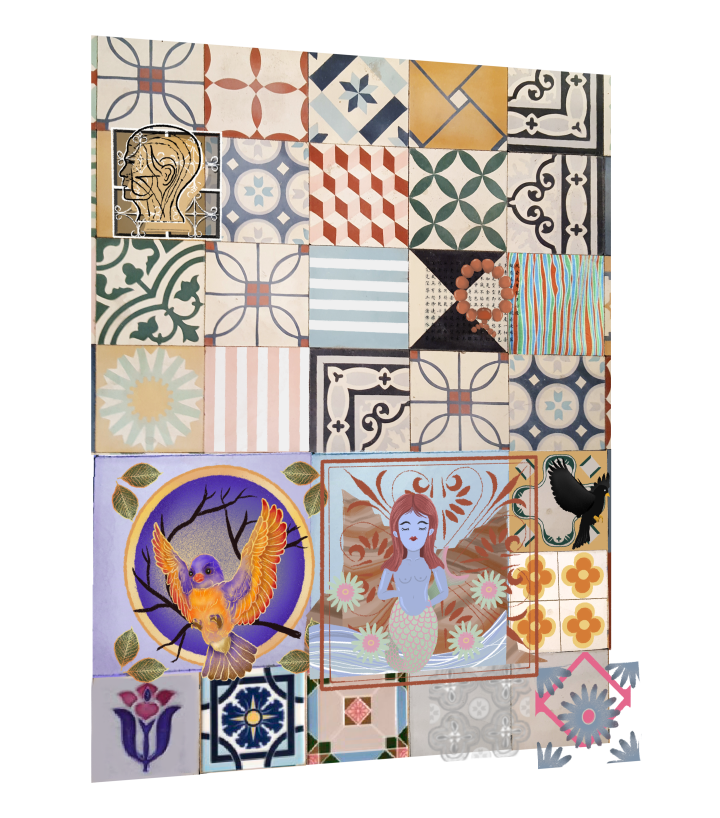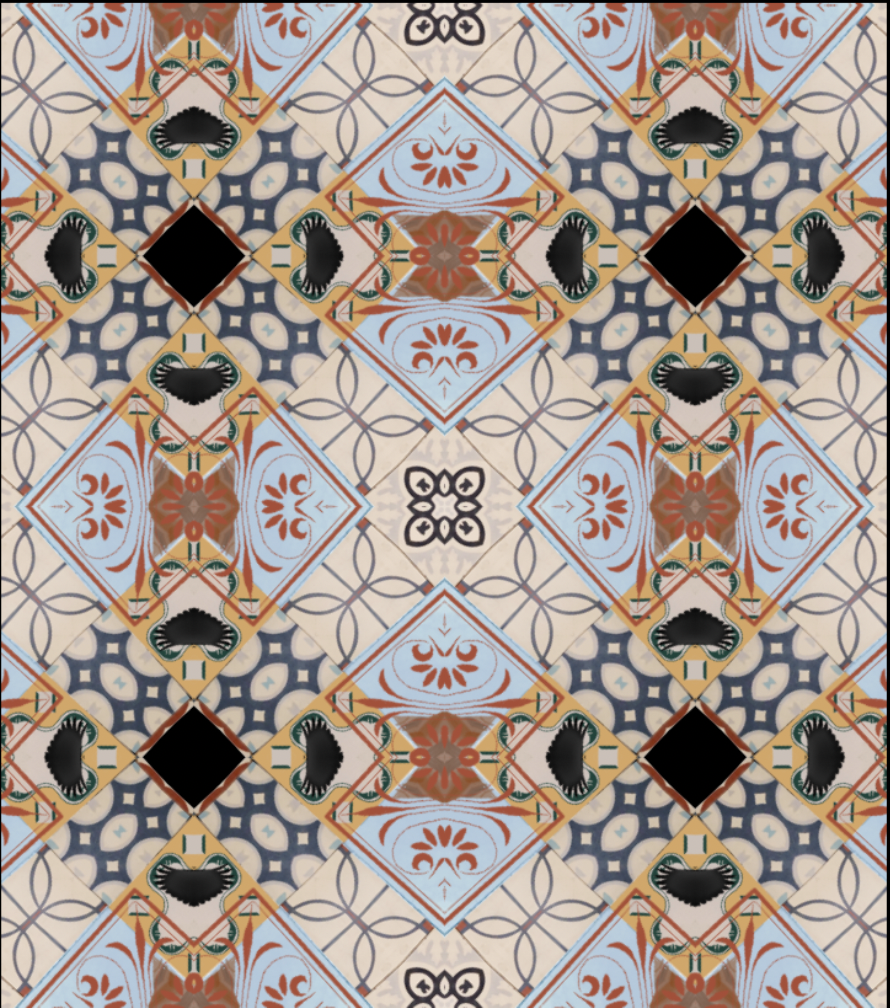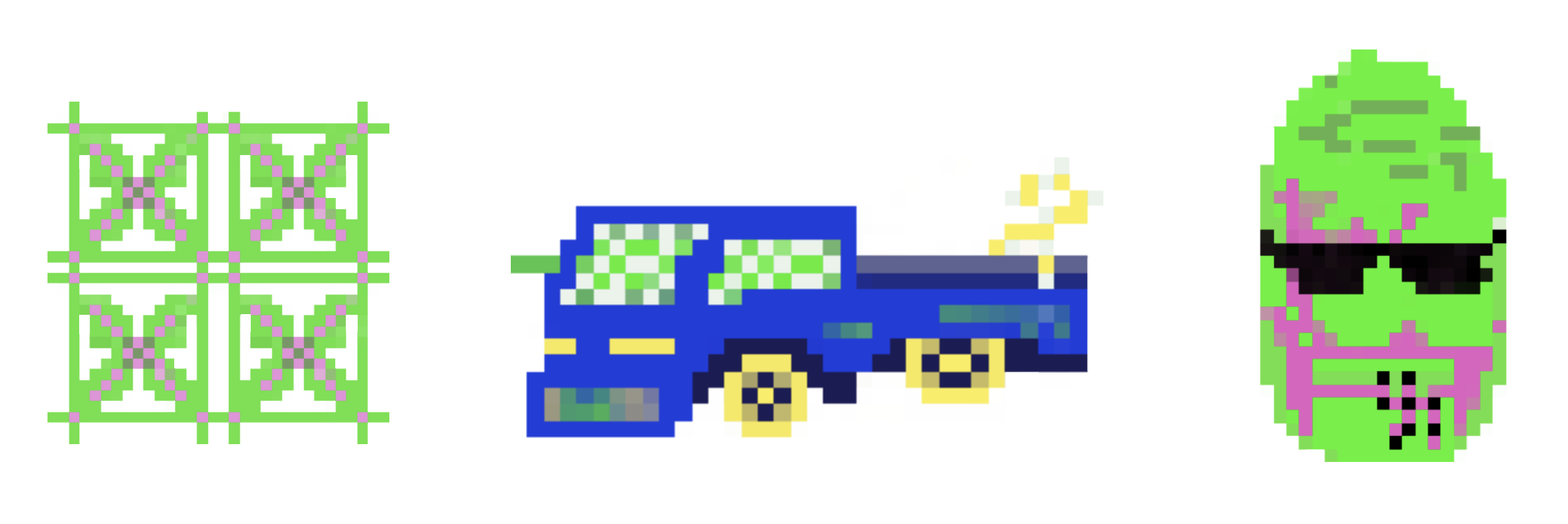
Taiwanese Majolica Tile
I choose tile as a format for imagery exploration this week because it was invented in Spain, which along with the Dutch was Taiwan’s first foreign colonial power. This art, also a technology, was not actually introduced in Taiwan until the Japanese imported in 1915 during the middle of their time as colonial power leading my island. In Japan these tiles are relatively cheap and put into bathrooms, but when they were imported it was an expensive luxury so local craftsmen would install them onto prominent visual positions outside the home to display their wealth. This tile is actually one of the first transfer of skilsl from outside the country that became a big local artform that was taken farther in Taiwanese design than elsewhere. The art and visual design of these tiles was made into intricate symbols of blessings that have images of special representative cultural icons such as peaches and bats both being a blessing in different forms. Taiwanese took these tiles, and empowered with the ability to craft them, transformed a relatively basic object/ media into a exquisitely beautiful part of life. Understanding decolonization in Taiwan, this craft is one of the earliest arts that has roots from outside, but became so representative of the blooming unique culture. Plus, these tiles are such a perfect graphic design medium filled with patterns, symbols, color selections, and more for research. Interestingly, the craftsmen were actually Japanese people but the growth of such beautiful designs was driven by the Taiwanese wealthy class that would order these tiles to be made for their homes, fueling the development of the Majolica tile industry to create such quintessentially Taiwanese patterns. The technology aspect of this design is also fascinating because the techniques used to make them were not given voluntarily from European partners, but rather “cracked” by the Japanese ceramics artisans. Because of the tech transfer piece of this story, the era of Taiwanese Majolica tile only lasted from the 1915 period until the end of Japanese Colonial rule in 1945, dropping off dramatically at the start of WWII for the same reason. In these short 20 years of production, these valuable commissioned tile works resulted in some of
the most iconic/ beautiful/ and authentically local imagery created. Sadly, much of these tiles have been lost to the destruction of a later era not respecting or understanding the unique value of these treasures of history and beauty. There is also an interesting story behind the individual, Xu Jiabing, who began saving these tiles just 20 years ago, creating a museum by himself that has collected over 4000 images and patterns preserved in Majolica Tile from buildings slated for demolition all around the island. The saved tiles are even able to be restored in this workshop/ museum that is housed in a historical building in Chia-yi.






Taiwanese Majolica design in AR:
Decolonization:


Generative Design Pattern:
So I took on the notion of how majolica tiles shine and tell stories for one's family. My version of the nowaday majolica tile has another layer of AR filter to explore. By scanning on the tile, you can see each story of the family members I portray. To do this experiment a little further, I expanded my redesignedre-designed version of the tile with the power of generative computer design. And somehow, the algorithm generates many similar patterns seen elsewhere in Taiwan! For example, windows made of textured floral glass and the temple's carved ceiling. It is beautiful to see how they share the same DNA of visual language while I deconstruct and reorganize them back together.



